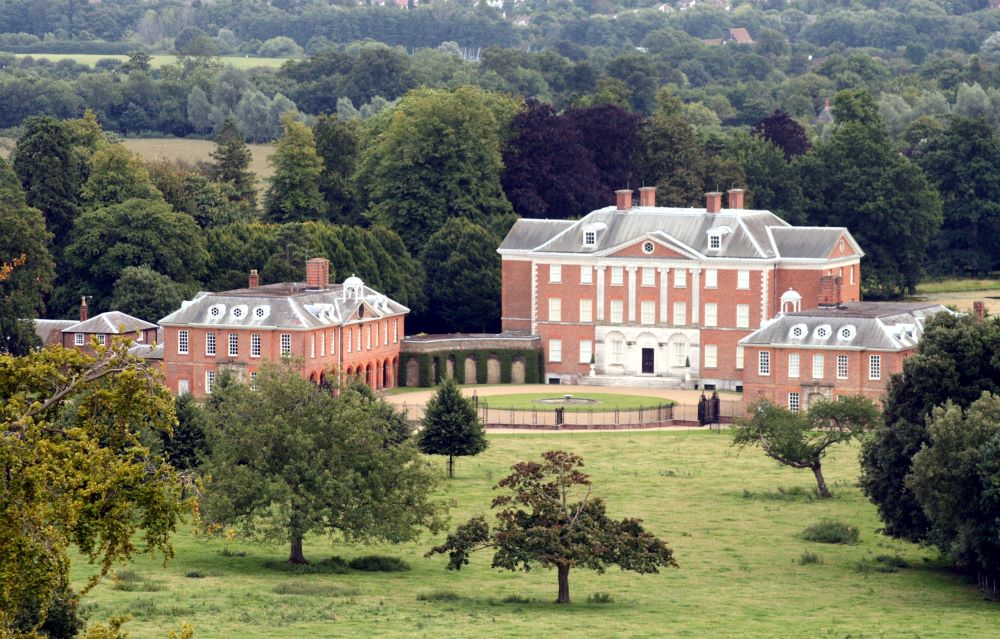Last week’s blog asked for a family name. The answer was ‘Stanhope’, recently topical owing to the reopening of the National Portrait Gallery, one of whose founders was the 5th Earl Stanhope.

The story of the Stanhopes could be said to start with Philip Stanhope, (1584-1656) created 1st Earl of Chesterfield, by Charles I in 1628. He was a royalist in the civil war, imprisoned and eventually died under house arrest in Covent Garden. His wife, Catherine Hastings, had 13 children and from these are descended the Earls of Chesterfield.
But Philip had a second wife, Anne Packington. She had a son Alexander (1638-1707), who in turn had a son, James, (1673-1721) who became the 1st Earl Stanhope. From him are descended the Earls Stanhope
So back to the Chesterfields:
Philip Stanhope 2nd Earl of Chesterfield, (1634-1714) married Lady Anne Percy but she died and he turned his attentions to Mary, the daughter of Lord Fairfax, the civil war military commander. Before Stanhope could tie the knot, however, Mary’s head was turned by a certain George Villiers, the 2nd Duke of Buckingham.
The jilted Stanhope then married Elizabeth Butler, the daughter of James Butler, Duke of Ormond. They had a daughter Elizabeth Stanhope who married John Lyon, 3rd Earl of Strathmore and Kinghorne, from whom Elizabeth Bowes Lyon was descended. But Elizabeth Stanhope’s parentage is disputed and it is likely that her father was not the Earl of Chesterfield but Barbara Villiers, the famous lover of King Charles II. So was Charles II’s grandmother the descendant of Barbara Villiers?!
Philip married a third time, to Lady Elizabeth Dormer. Their older son became the 3rd Earl of Chesterfield (1673-1726)and his son, Philip, became 4th Earl of Chesterfield (1693-1773), whose highly impressive first speech in the commons was delivered when underage. It was the 4th Earl of whom Samuel Johnson said: ”This man, I thought, had been a Lord among wits; but I find he is only a wit among Lords”. A founder of the Foundling hospital in Bloomsbury, he married Melusa von Schulenburg, the daughter of George 1’s mistress (‘the Maypole’). It is the 4th Earl who built Chesterfield House, a huge mansion in Mayfair, demolished in 1937.
In 1743 Philip started a successful pamphlet campaign under the pseudonym ‘Geoffrey Broadbottom’ resulting in the 1744 ‘Broad Bottom’ ministry led by Henry Pelham.
On being appointed Lord Lieutenant of Ireland in January 1745, Chesterfield initiated a series of landscape works In Phoenix Park, Dublin, including the Phoenix Column. He is also credited with opening the park to the public.

The 1750 New Calendar Act, which established the Gregorian calendar, is sometimes called ‘Chesterfield’s Act’ owing to the 4th Earl’s convincing arguments in the House of Lords.
After his death his illegitimate son’s wife published Chesterfield’s ‘Letters to His Son on the Art of Becoming a Man of the World and a Gentleman’ which, according to Samuel Johnson, taught “the morals of a whore, and the manners of a dancing-master”
The 5th Earl, Philip (1755-1814) was a favourite of George III; the 6th Earl (1805-1866) was a notable horse racing man; the 7th Earl (1831-1871) played cricket for Nottinghamshire and founded Derbyshire cricket club. He was succeeded by his cousin George, the 8th Earl (1822-1883). Consecutive Earls in the 19th century had no direct issue and a series of cousins and cousins once removed inherited the title. The 7th Earl Stanhope (1880-1967) united the ‘Chesterfield’ line with the Earls Stanhope line.
So now the Earls Stanhope:
James Stanhope, 1st Earl Stanhope, 1673-1721 (see above) was a notable general and statesman and it is he who bought the Kent country estate, Chevening. The last Chancellor of the Exchequer to sit in the House of Lords he is also sometimes claimed to be our first Prime Minister although most historians argue this was Robert Walpole. James married Lady Pitt the aunt of the prime minister Lord Chatham.
James and Lucy’s son Philip became 2nd Earl Stanhope and was a friend of Benjamin Franklin and Joseph Priestley. Philip’s second son, Charles, another prominent scientist, became the 3rd Earl and he married Lady Hester Pitt, the sister of the Prime Minister William Pitt. Their oldest child was the remarkable traveller Hester Stanhope who featured in a previous blog on this site.
Philip, the 4th Earl Stanhope, was the 3rd Earl’s son by his second marriage to Louisa Grenville. Philip was also a scientist, known for is eccentricity and for becoming involved in the notorious case of the foundling Kaspar Hauser who claimed he had grown up alone in a dark room.
Philip’s son, the 5th Earl, another Philip, was a historian and one of the founders of the National Portrait Gallery whose re-opening in June prompted this quiz.
The 7th Earl was also a trustee of the NPG and bequeathed the Chevening estate to a trust for the benefit of the nation. It is currently occupied by the Foreign Secretary, James Cleverly.

Recommended walk: Friday 8th September 3pm
Hidden Westminster
info@walkinglondonhistory.com
